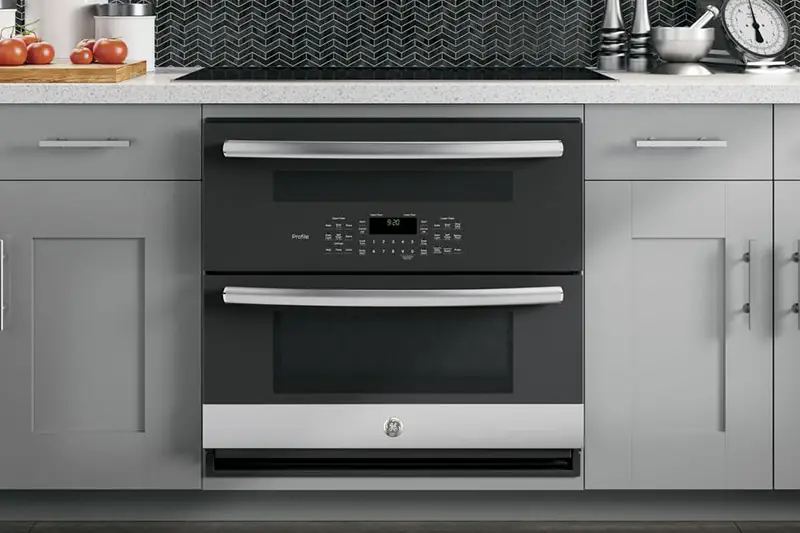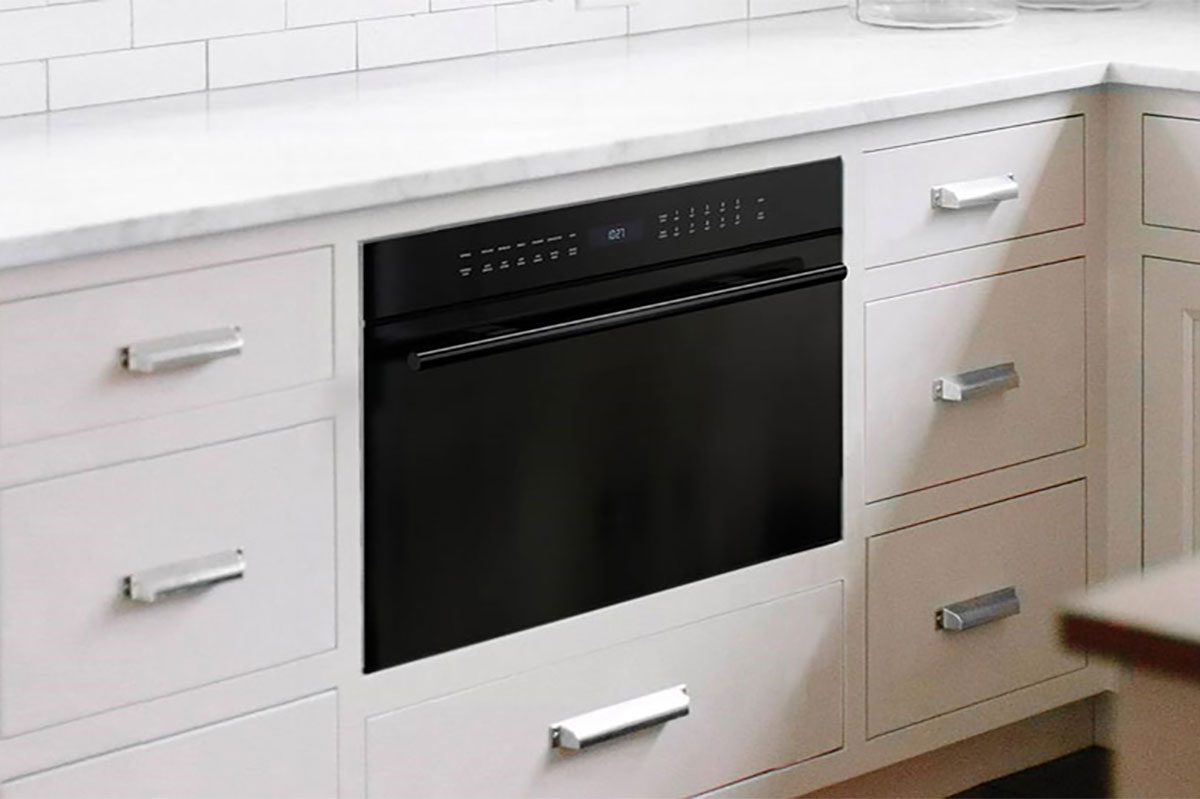As an Amazon Associate, I earn from qualifying purchases

Steam ovens use moisture to cook food, while speed ovens combine microwave and convection heat for faster results. Both appliances offer unique cooking benefits, catering to different culinary needs.
Choosing the right kitchen appliance can enhance your cooking experience. Steam ovens excel in retaining nutrients and moisture, perfect for healthy meals. They steam vegetables, bake bread, and even reheat leftovers without drying them out. Speed ovens, on the other hand, offer the convenience of quick cooking, ideal for busy lifestyles.
They efficiently cook a variety of foods, including frozen meals, while maintaining crispy textures. Understanding these differences can help you decide which appliance fits best in your kitchen. Each option has its strengths, making it essential to evaluate your cooking style and preferences.
Introduction To Steam Oven Vs Speed Oven
Steam and speed ovens offer unique cooking methods. Both appliances can enhance your kitchen experience. Understanding their key features helps in making informed decisions.
Key Features Of Steam Ovens
Steam ovens use water vapor for cooking. They retain moisture and nutrients in food. This method is healthier than traditional cooking.
- Moisture Retention: Keeps food juicy and flavorful.
- Nutrient Preservation: Maintains vitamins and minerals.
- Versatility: Can steam, bake, or reheat food.
- Easy Cleaning: Minimal residues make cleanup simple.
Steam ovens are great for various dishes. They are perfect for vegetables, fish, and even desserts. Many models come with preset cooking functions.
Key Features Of Speed Ovens
Speed ovens combine microwave and convection cooking. They cook food quickly and evenly. This saves time in the kitchen.
- Fast Cooking: Reduces cooking time significantly.
- Even Heating: Uses convection for consistent results.
- Multi-Functionality: Bake, roast, and reheat in one appliance.
- Compact Design: Fits easily in smaller kitchens.
Speed ovens are ideal for busy lifestyles. They handle everything from snacks to full meals. Their quick heating makes them a valuable kitchen tool.
How Steam Ovens Work
Steam ovens use steam to cook food evenly. They create a moist cooking environment. This helps maintain the food’s natural flavors and nutrients.
Water is heated until it turns into steam. The steam circulates around the food. This method cooks food faster than traditional ovens.
Benefits Of Cooking With Steam
- Healthier Meals: Steam cooking reduces the need for oils and fats.
- Retains Nutrients: Steam preserves vitamins and minerals.
- Enhanced Flavor: Food retains its natural taste.
- Moist Texture: Prevents drying out during cooking.
- Less Mess: Easy to clean with minimal splatter.
Ideal Dishes For Steam Ovens
| Dish Type | Example Dishes |
|---|---|
| Vegetables | Broccoli, Carrots, Spinach |
| Fish | Salmon, Cod, Tilapia |
| Grains | Rice, Quinoa, Barley |
| Dumplings | Dim Sum, Bao Buns |
| Meats | Chicken Breast, Pork Tenderloin |
How Speed Ovens Work
Speed ovens use a mix of technologies to cook food quickly. They combine the best features of convection and microwave cooking. This dual approach helps save time and enhance flavor.
Combining Convection And Microwave Technologies
Speed ovens integrate two main cooking methods:
- Convection Cooking: Circulates hot air around food.
- Microwave Cooking: Uses electromagnetic waves to heat food.
This combination allows food to cook evenly and retain moisture. The convection fan ensures heat distribution. The microwave function speeds up the cooking process.
| Feature | Convection | Microwave |
|---|---|---|
| Heat Source | Hot air | Electromagnetic waves |
| Cooking Speed | Moderate | Fast |
| Texture | Brown and crisp | Soft and moist |
Speed Oven Cooking Advantages
Speed ovens offer several key benefits:
- Quick Cooking: Meals are ready in less time.
- Versatility: Cook, bake, or reheat with one appliance.
- Energy Efficient: Uses less energy than traditional ovens.
- Space Saving: Compact design fits in smaller kitchens.
These advantages make speed ovens a great choice for busy households. Fast cooking doesn’t sacrifice flavor or texture. Enjoy delicious meals without waiting long.
Comparing Cooking Quality
Cooking quality is essential for delicious meals. Steam oven vs speed oven, each offer unique benefits. Understanding their differences helps in choosing the right one.
Texture And Flavor With Steam Ovens
Steam ovens use moisture to cook food. This method enhances texture and flavor. Here are some benefits:
- Moisture retention: Keeps food juicy and tender.
- Flavor enhancement: Natural flavors intensify during cooking.
- Even cooking: Steam distributes heat uniformly.
Steam ovens are great for:
- Vegetables: Bright colors and crisp textures.
- Fish: Flaky and moist results.
- Breads: Soft interiors with a crispy crust.
Food cooked in steam ovens tends to be healthier. Less fat is needed for cooking. This method also preserves nutrients.
Cooking Speed And Efficiency With Speed Ovens
Speed ovens combine microwave and convection cooking. They cook food quickly while maintaining quality. Key advantages include:
- Fast cooking: Reduces meal prep time significantly.
- Versatile options: Can bake, roast, or reheat.
- Energy efficiency: Uses less energy compared to traditional ovens.
Speed ovens excel in cooking:
- Frozen meals: Quick defrosting and cooking.
- Reheating leftovers: Retains flavor and texture.
- Quick baking: Ideal for busy schedules.
Both ovens have unique strengths. Choosing between them depends on your cooking style.
Design And Installation Considerations
Choosing between a steam oven and a speed oven involves understanding their design and installation needs. Both types have unique features and requirements. Below, we explore two key aspects: space requirements and aesthetic compatibility with kitchen decor.
Space Requirements
Before selecting an oven, consider the space in your kitchen. Each type has different space needs:
| Oven Type | Typical Dimensions (inches) | Installation Depth |
|---|---|---|
| Steam Oven | 24 – 30 W x 20 – 24 H | Min 20 |
| Speed Oven | 24 – 30 W x 20 – 24 H | Min 20 |
- Measure available space accurately.
- Consider ventilation needs for steam ovens.
- Speed ovens may require less clearance.
Both ovens typically fit standard cabinetry. Ensure your kitchen layout supports easy access and usage.
Aesthetic Compatibility With Kitchen Decor
Both steam and speed ovens come in various styles and finishes. Choose one that complements your kitchen’s look.
- Stainless Steel: Offers a modern touch.
- Black: Adds a sleek, elegant look.
- Custom Panels: Blend seamlessly with cabinetry.
Consider the following:
- Match the color with other appliances.
- Choose a style that fits your kitchen theme.
- Think about the overall flow of your kitchen design.
Both ovens can enhance your kitchen’s appearance. Select one that fits your personal style and needs.

Credit: blog.yaleappliance.com
Ease Of Use And Maintenance
The ease of use and maintenance of steam ovens and speed ovens are crucial for busy kitchens. Both appliances offer unique features that can simplify cooking. Understanding their user interface and cleaning requirements helps in making an informed choice.
User Interface And Programmability
The user interface affects how easily you can operate each oven. Consider the following:
- Steam Oven: Often features simple knobs and buttons.
- Speed Oven: Usually comes with a digital display and touch controls.
Programmability varies between models:
| Features | Steam Oven | Speed Oven |
|---|---|---|
| Pre-set Cooking Modes | Common | Very Common |
| Manual Settings | Available | Advanced Options |
| Smart Features | Limited | Widespread |
Choose an oven that fits your cooking style. A user-friendly interface saves time and reduces frustration.
Cleaning And Upkeep
Cleaning is essential for both steam and speed ovens. Regular upkeep ensures better performance and longevity.
- Steam Oven:
- Use vinegar and water for residue.
- Wipe the interior after each use.
- Check water reservoir regularly.
- Speed Oven:
- Clean the microwave cavity with mild soap.
- Remove and wash the turntable.
- Wipe down exterior surfaces weekly.
Both ovens require minimal effort to maintain. A clean oven enhances cooking efficiency and results.
Cost Analysis
Understanding the cost differences between a steam oven and a speed oven is essential. This analysis covers the initial investment and operating costs over time.
Initial Investment
The initial cost of these ovens varies significantly. Here’s a breakdown:
| Type of Oven | Average Price Range |
|---|---|
| Steam Oven | $1,500 – $4,000 |
| Speed Oven | $1,000 – $3,000 |
Steam ovens tend to be more expensive. Speed ovens offer a lower entry price. Consider your cooking needs before making a choice.
Operating Costs Over Time
Operating costs include energy consumption and maintenance. Here’s how they compare:
- Energy Consumption:
- Steam ovens use more water and energy.
- Speed ovens cook faster, saving energy.
- Maintenance:
- Steam ovens need regular descaling.
- Speed ovens require less maintenance.
Over time, speed ovens can save more on energy costs. Steam ovens may incur higher maintenance fees. Calculate these costs based on your usage patterns.
Making The Right Choice For Your Kitchen
Choosing between a steam oven and a speed oven can be tricky. Each type offers unique benefits. Understanding your cooking needs helps make the best decision.
Assessing Your Cooking Needs And Preferences
Start by evaluating your cooking style and preferences. Here are some key factors:
- Cooking Frequency: Do you cook daily or occasionally?
- Food Types: Do you prefer baking, steaming, or roasting?
- Health Goals: Is healthy cooking a priority for you?
- Time Constraints: Do you need meals prepared quickly?
Consider the following table to visualize differences:
| Feature | Steam Oven | Speed Oven |
|---|---|---|
| Cooking Method | Uses steam for moist cooking | Combines microwave and convection |
| Health Benefits | Retains nutrients and moisture | Quick cooking but may dry out food |
| Versatility | Great for vegetables and fish | Good for reheating and baking |
| Cooking Time | Longer cooking times | Fast cooking times |
Identify what matters most to you. Choose a steam oven for healthy meals. Opt for a speed oven for quick cooking. Both options have their perks.
Final Thoughts: Steam Oven Vs Speed Oven
Reflect on your kitchen space and budget. Steam ovens often require more room. Speed ovens can fit in tighter spaces.
Think about your cooking habits. Choose the option that matches your lifestyle. Here are some points to remember:
- Budget: How much are you willing to spend?
- Space: Do you have enough space for the unit?
- Ease of Use: Which oven is easier to operate?
- Maintenance: Consider how easy it is to clean.
Assess these factors carefully. Making the right choice enhances your cooking experience.
Conclusion
Choosing between a steam oven and a speed oven depends on your cooking needs. A steam oven excels in retaining moisture and nutrients, ideal for healthy meals. Conversely, a speed oven combines microwave and convection functions, perfect for quick cooking.
Assess your priorities to make the best decision for your kitchen.
Frequently Asked Questions
Steam Oven Vs Speed Oven: What’s The Difference?
Steam ovens cook with moisture, while speed ovens combine convection heat with microwave technology for faster cooking.
Which Is Healthier: Steam Or Speed Oven?
Steam ovens retain nutrients better, making them a healthier cooking option compared to speed ovens.
Can A Speed Oven Replace A Microwave?
Yes, speed ovens can replace microwaves, offering versatile cooking methods without sacrificing speed or efficiency.
What Foods Are Best For Steam Ovens?
Vegetables, fish, and poultry are ideal for steam ovens, enhancing flavor and retaining nutrients effectively.
As an Amazon Associate, I earn from qualifying purchases